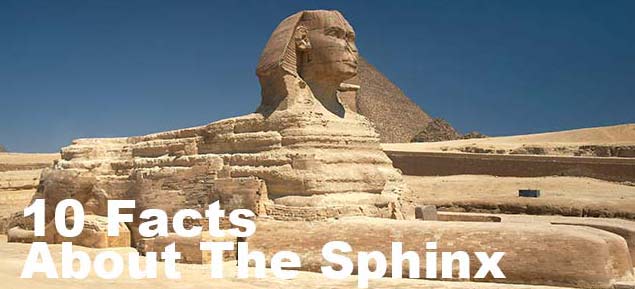Mythical Creature
A sphinx is a mythical creature with, as a minimum, the head of a human and the body of a lion. In Greek tradition, it has the head of a human, the haunches of a lion, and sometimes the wings of a bird.
Origin of Sphinx
The true origin and purpose of the Sphinx remains a mystery. Despite its fundamental enigma, the image of the Sphinx remains in the mind of history as the keystone of ancient Egyptian civilization and a part of its religious beliefs.
The Name “Sphinx”
The Western name “Sphinx” was given to it in antiquity based on the legendary Greek mythology sphinx, a creature with the body of a lion, the head of a woman and the wings of a bird, though Egyptian sphinxes have the head of a man.
Largest Sphinx
The largest and most famous sphinx is the Great Sphinx of Giza, situated on the Giza Plateau and adjacent to the Great Pyramids of Giza in Egypt. It is also the largest free-standing sculpture.
Head
The head of the Great Sphinx of Giza was altered many times by the Pharaohs therefore it is best remembered with the head of a king wearing his headdress and the body of a lion. It is believed that the original head was that of the lion and the Sphinx dates to the Age of Leo – 12,000 years ago.
Missing Nose
The one-meter-wide nose on the face of the Great Sphinx of Giza is missing. It is presumed that the nose was broken off by a cannon ball fired by Napoleon’s soldiers.
Body
The paws are 50 feet long (15m) while the entire length is 150 feet (45m). The Sphinx has a tail which wraps around the right hind paw.
Breastplate
The Sphinx has a breast plate between its front paws. This breastplate contains many metaphors.
Enclosure Wall
In 2010, Egypt’s Supreme Council of Antiquities (SCA) announced the the uncovering of ancient walls surrounding the Great Sphinx of Giza after a routine excavation.
Ethnicity
Forensic experts as well as casual observers have characterized the face of the Great Sphinx of Giza as “Negroid”. One of the earliest known descriptions of a “Negroid” Sphinx is recorded in the travel notes of French scholar Constantin-François de Chassebœuf, Comte de Volney, who visited in Egypt between 1783 and 1785.

